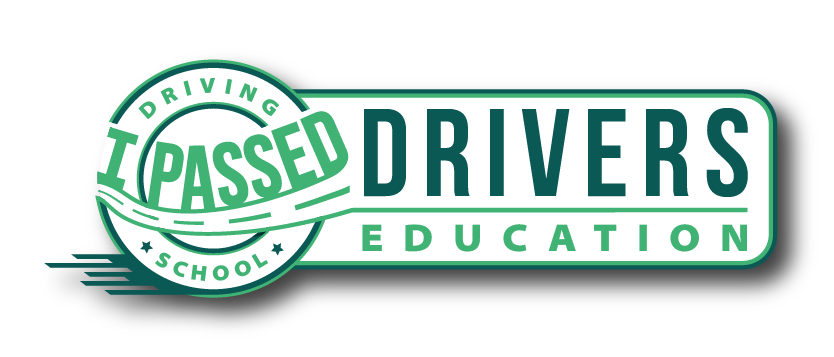Contents
Defensive driving skills can help you avoid accidents and lower your risk behind the wheel. While we can’t control other drivers, we have mastery over our own actions. Teen drivers in California are required to have 6 hours behind the wheel training, where they’ll learn defensive driving skills.
Refreshing your defensive driving skills can help you avoid dangers caused by others. In this article, we’ll discuss how you can improve your defensive driving skills to become a safer, more proactive driver.
Tips for Better Defensive Driving
Stay Focused
According to the National Highway Traffic Safety Administration, distracted driving is any activity that diverts attention from driving. This includes using your phone, eating and drinking, talking to people in your vehicle, or operating the stereo, entertainment or navigation system.
Distracted driving is reported to be the “new drunk driving”, now accounting for approximately 25% of all motor vehicle crash fatalities. Distracted driving is at fault for more than 58% of teen crashes, and car crashes are top killer of teens in the United States.
Distractions should be avoided at all costs. Talking on the phone, eating, and chatting with your passengers can be done once you’ve reached your destination. If matters are urgent, it’s better that you pull over to the side of the road to take care of your business.
Be Alert
Being alert means being fully awake, present, and aware of your surroundings – and that means not driving while sleep-deprived or under the influence of alcohol or drugs.
Apart from distracted driving, drowsy driving is another major killer on the streets. In fact, there’s little difference between drowsy driving and driving while drunk. If you’ve gone more than 20 hours without sleep, your bodily functions match up with someone who has a blood-alcohol concentration of 0.08% – the legal BAC limit.
A study by the AAA Foundation for Traffic Safety estimated that 328,000 car crashes related to drowsy driving occur every year.
Your Orange County driving school will teach you that it’s critical that you do not drive while drunk or drowsy. Ideally, you should have at least seven hours of sleep before getting behind the wheel. If you’re tired or wasted, it’s better to let someone else drive your vehicle, or postpone driving altogether until you’ve recovered.
Look Ahead of Your Vehicle
While you’re behind the wheel, your immediate focus may be only what’s right in front of you. However, defensive drivers should have a sense of situational awareness. When appropriate, look ahead to see what’s further down the road. This way you can more easily anticipate problems like slow traffic, intersections, and highway debris.
Don’t Depend on Other Drivers
When you’re behind the wheel, it’s easy to assume that the other drivers on the road will be pay enough attention to keep you out of an accident. However, that’s simply not true.
It’s up to you and only you to stay safe while behind the wheel. If you’re expecting another driver to be mindful on the road, it stands to reason that they’re also making the same assumption. That lapse where both of you are expecting the other to be the better driver can lead to an accident.
Driving schools in Orange County will tell you to always expect other drivers to make mistakes. That’s nothing personal – just a way to keep yourself safe on the road! In the event that another driver messes up on the road, you’ll need to be able to react quickly to avoid getting caught in a crash.
Follow the Three-Second Rule
When you take behind-the-wheel driving lessons, you’ll learn about something called “the three-second rule.”
This rule entails that you leave three seconds of space between you and another car. To measure, watch the car in front pass a marker, like a lamp post or a sign. Once the car in front passes the marker, you should be able to count to three seconds before your own car passes it. Any less means you’re tailgating, and you’d best put some distance between the two of you.
The three-second rule helps you establish a safe distance between you and the car in front. This is essential to prevent crashes; if the car in front of you stops suddenly, you should have ample space to safely hit your own brakes.
The three-second rule only applies to good traffic conditions. In inclement weather, the following distance should be increased for an additional second or two to account for poor visibility and slick roads.
Maintain the Speed Limit
Defensive driving absolutely means respecting the speed limit. The speed limit is the recommended speed for your car to traverse the terrain safely. Roads may be slippery, or there may be a blind curve or a steep slope. The speed limit gives you enough leeway to put on the brakes safely in case you meet another car or simply need to gain more control as you go down the road.
Take note that posted speed limits apply to ideal conditions, which means that you may have to go slower when it rains or snows. Controlling the car will already be difficult because the road will be slippery and your tires get poor traction; you’ll need to go at a slower speed so you can brake and make turns safely.
Plan an Escape Route
When you’re driving, it’s always best to position your vehicle so that you can have an escape route to the side of the road in case of danger. You’ll also want to make sure that you are being seen by other motorists, especially when driving in the dark.
If you notice a car coming full speed ahead, you’ll want to make sure you’ve given yourself enough space to pull into another lane or off to the side of the road so that they can pass.
Use Your Blinkers
Your blinkers are there to help other motorists understand what your car will be doing. Always use your blinkers when switching lanes so that the drivers behind you know that you will be entering their lane. They can then make adjustments, like slowing down to let you in safely.
Entering a lane without giving the driver behind you due warning can catch them unawares, leading to accidents (not to mention, it’s quite rude!). Your lane changes should be smooth and predictable.
Don’t Give in to Road Rage
Road rage is dangerous. Consider this: a driver from the adjacent lane cuts in front of you without turning their blinkers on. Incensed, you might decide to tailgate them to express your annoyance. The driver in front of you, enraged by your tailgating, might speed up to outstrip you. This can lead to an accident.
It can be infuriating to think that you spend so much effort trying to be a decent driver, and yet others don’t seem to extend the same courtesy. However, driving is not about putting other motorists in their place, it’s about getting to your destination safely.
If another driver is not practicing defensive driving, it’s always best to not engage. Your safety is much more important than getting one up on a stranger.
Taking a Defensive Driving Course can refresh your driving knowledge and defensive driving skills. What’s the most important defensive driving skill you learned in driver’s ed? Let us know in the comments.

